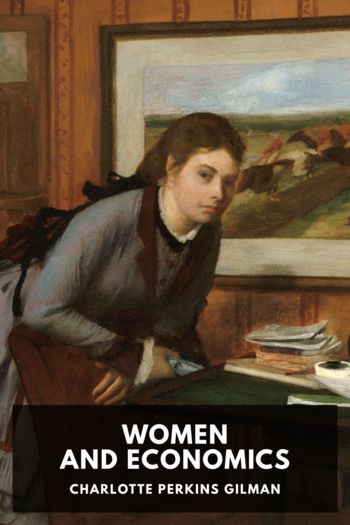My Spiritual Journey, Dalai Lama [best short books to read .TXT] 📗

- Author: Dalai Lama
Book online «My Spiritual Journey, Dalai Lama [best short books to read .TXT] 📗». Author Dalai Lama
Despite the claims of Chinese propaganda, millions of non-Chinese residents, living in regions presently controlled by the People’s Republic, are enduring all sorts of discrimination. The Chinese themselves admit that, despite years of the Communist regime, these regions have remained backward and poor. However, the most serious impact of Chinese policy on the peoples of these regions is the demographic transformation that has been imposed on them. Almost everywhere, new Chinese immigrants have become the majority. Manchuria has been completely absorbed. In inner Mongolia, only 2.6 million Mongols remain, surrounded by 18 million new Chinese arrivals. Over 50 percent of the population of eastern Turkistan is Chinese today, whereas in Tibet the 6 million Tibetans are outnumbered by 7.5 million Chinese immigrants.
Naturally, the non-Chinese peoples are rebellious. Unless the Chinese leaders take measures to appease them, it is very likely that serious problems will arise in the future. I believe it is imperative that China try to solve these questions through dialogue and compromise. The government of China must realize that these questions in the non-Chinese regions under its yoke are not purely economic ones. They are at root political, and as such, they can be resolved only by decisions of a political order.
To bring a peaceful, reasonable solution to the Tibetan question, I revealed my Five-Point Peace Plan and presented the Strasbourg Proposal. Even after the proclamation of martial law in Tibet, we suggested that preliminary meetings take place in Hong Kong, in order to discuss the steps to follow to reduce tensions and facilitate actual negotiations. Unfortunately, the Chinese leaders, to this day, have not replied positively to our sincere efforts.
The Chinese rejected and vehemently condemned my position on the past status and history of Tibet. They want to see me change my position. But it is not possible to alter the truth of the facts. In their narrowness of mind, the Chinese did not understand the gist of the message I tried to pass on to them in my Five-Point Peace Plan, in my Strasbourg Proposal, or in my Nobel speech concerning future relations between Tibet and China, which I am ready to examine with an open mind through dialogue.
Just as we struggle for the rights, freedom, and future well-being of six million Tibetans, so we should reinforce our democratic institutions and our process of democratization. As I have declared many times, the respect for freedom and democracy is essential for the development of a modern Tibet. In 1963 I approved the Democratic Constitution of Tibet, and we have acquired significant experience in the functioning of democratic institutions. It is still necessary to democratize further, both in the Assembly of Deputies of the Tibetan People and in the Tibetan Administration. That is why I have collected the opinions and suggestions of our people. I feel it is the responsibility of every Tibetan to create a completely free and democratic community in exile.
It is important that the Chinese authorities recognize the real aspirations of the Tibetan people, the majority of whom live in Tibet. Almost all Tibetans wish for nothing other than the full-fledged independence of their country. If the Chinese doubt this, they should authorize a referendum controlled by an international commission in Tibet to determine the aspirations of the Tibetan people.
I note with sadness that far from examining the Tibetan question from a new perspective, the Chinese authorities continue to use their impressive military power to crush the many demonstrations of Tibetans. Despite such brutality, the Tibetans in Tibet remain determined and unwavering. It is the responsibility of every Tibetan to struggle for freedom and human rights. But our struggle should be based on nonviolence.
One important event was the Nobel Peace Prize I was awarded. Although it did not change my status as a simple monk, I was happy about it for the Tibetan people, for that prize brought a deserved recognition of their struggle for freedom and justice. It reaffirmed our conviction that with the weapons of truth, courage, and determination, we will succeed at freeing our country. The relationship between Tibet and China should be based on the principle of equality, trust, and mutual benefit. It should also be based on the recommendations that the sovereigns of Tibet and China wisely expounded in a treaty made in AD 823. According to the clause engraved on a stone column in Lhasa, “The Tibetans will live happily in vast Tibet, and the Chinese in vast China.”27
In March 1990, “a spirit of freedom [was] wafting throughout the world” in Europe, with the fall of the Berlin Wall and the dismantling of the Soviet Union, and in China, with the demonstrations on Tiananmen Square, but in Tibet martial law was still in effect. It would not be lifted until a few months later, in May. But this measure did not signify the end of the oppression, whose brutality only increased, as an Amnesty International report noted in 1991.
Beginning in 1992, special teams were charged with searching private houses throughout all of Tibet. People who owned photos, books, or teachings of the Dalai Lama were arrested and cruelly tortured, then imprisoned. Many of them disappeared.
In 1994 Beijing passed a series of measures to eradicate Tibetan opposition. The third Work Symposium on Tibet advocated ensuring “the unity of the motherland and fighting against separatism.” In the rhetoric of the propaganda of the “anti-Dalai” and “anti-separatism” campaigns, it was a question of “a life-and-death struggle,” and the recommendation was





Comments (0)